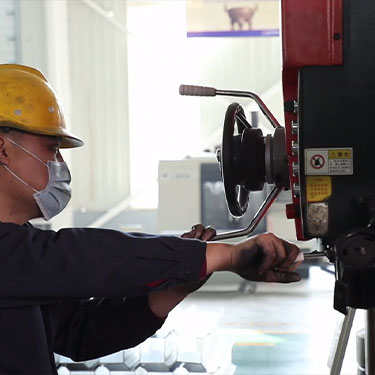
Dec . 07, 2024 11:18
Back to list
منظم ضغط الغاز
Understanding Gas Pressure Regulators Function, Importance, and Applications
Gas pressure regulators are essential devices used to control the pressure of gases in various applications, ensuring safety, efficiency, and reliability. These regulators play a crucial role in a wide range of industries, including healthcare, manufacturing, and energy. In this article, we will explore the function of gas pressure regulators, their importance, and the various applications in which they are used.
Function of Gas Pressure Regulators
At its core, a gas pressure regulator is a mechanical device designed to maintain a steady output pressure regardless of fluctuations in supply pressure or downstream demand. The regulator works by allowing gas to flow through it, where it encounters a diaphragm. This diaphragm is directly affected by the output pressure. When the output pressure rises above the preset level, the diaphragm moves in response, adjusting an internal mechanism that reduces the flow of gas. Conversely, if the output pressure drops, the diaphragm allows more gas to flow through, stabilizing the pressure.
Importance of Gas Pressure Regulators
1. Safety One of the main reasons for using gas pressure regulators is safety. High-pressure gas can be hazardous, potentially leading to leaks, explosions, or other dangerous situations. Regulators ensure that the gas is delivered at a safe pressure, helping to prevent accidents.
2. Efficiency In industrial applications, maintaining the correct pressure is essential for the efficient operation of equipment. Gas pressure regulators help optimize processes by ensuring that systems receive a consistent supply of gas at the right pressure, reducing waste and improving overall efficiency.
.
Applications of Gas Pressure Regulators
منظم ضغط الغاز

Gas pressure regulators are used in various settings, each requiring specific functionalities to meet their operational needs. Here are some key applications
1. Medical and Healthcare In medical facilities, gas pressure regulators control the delivery of essential gases such as oxygen and nitrous oxide. They ensure that patients receive the correct dosage of gases for respiratory support or anesthesia, crucial for effective treatment.
2. Industrial Manufacturing In manufacturing plants, gas pressure regulators are used in processes where gases like natural gas, oxygen, and argon are integral. For instance, in welding operations, maintaining the correct gas flow and pressure is vital for achieving high-quality welds.
3. Energy Production In power plants, regulators control the pressure of gases used in combustion processes. This regulation is key to optimizing energy output and maintaining safe operational conditions.
4. Household Applications Gas pressure regulators are commonly found in home appliances such as gas grills, heaters, and stoves. They ensure that these devices operate safely and efficiently, providing users with a reliable source of heat and energy.
5. Research and Laboratory In laboratories, precise control over gas pressures is often necessary for experiments and analyses. Specialty regulators allow scientists to achieve the specific conditions required for their research, ensuring accurate results.
Conclusion
Gas pressure regulators are vital components in numerous applications, offering safety, efficiency, and precision in gas management. From medical settings to industrial applications, their ability to maintain steady and safe gas pressures cannot be overstated. As technology evolves, advancements in regulator design will likely lead to even more efficient and safer systems, further enhancing their role in both industry and daily life. Understanding how these devices work and their importance can help users appreciate the critical functions they serve in ensuring the safe and efficient use of gases.
Latest news
-
Safety Valve Spring-Loaded Design Overpressure ProtectionNewsJul.25,2025
-
Precision Voltage Regulator AC5 Accuracy Grade PerformanceNewsJul.25,2025
-
Natural Gas Pressure Regulating Skid Industrial Pipeline ApplicationsNewsJul.25,2025
-
Natural Gas Filter Stainless Steel Mesh Element DesignNewsJul.25,2025
-
Gas Pressure Regulator Valve Direct-Acting Spring-Loaded DesignNewsJul.25,2025
-
Decompression Equipment Multi-Stage Heat Exchange System DesignNewsJul.25,2025

